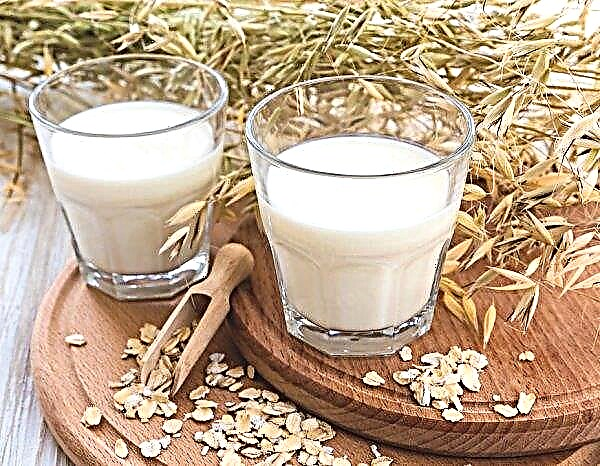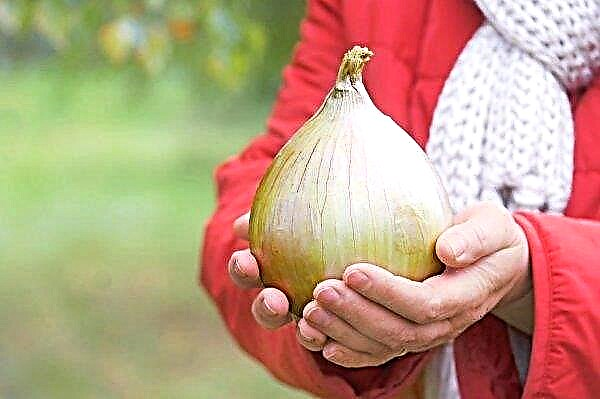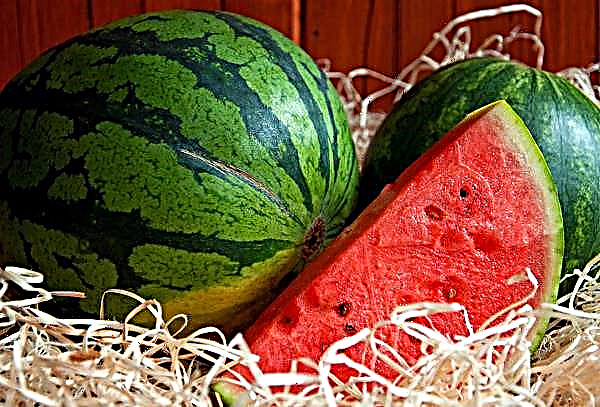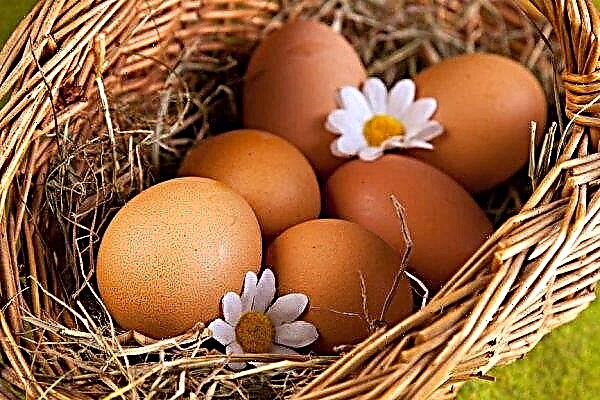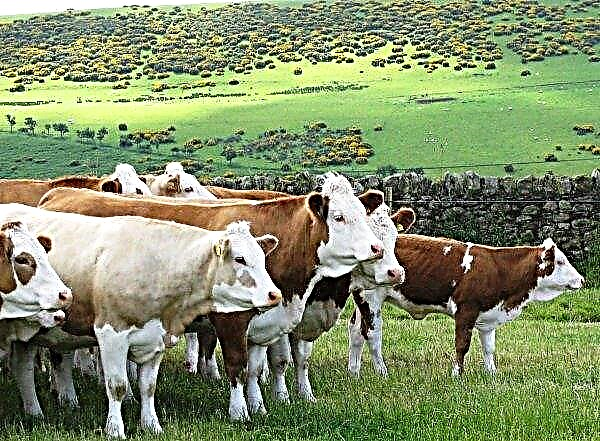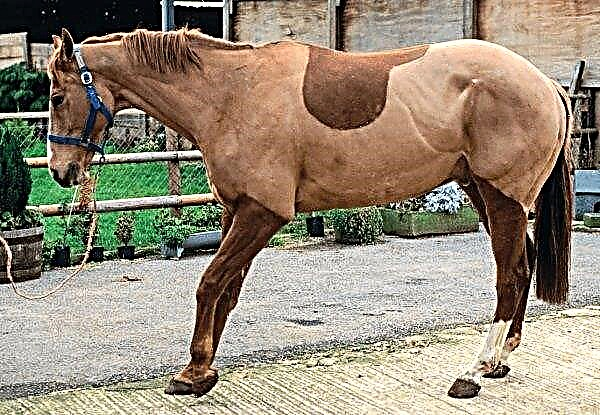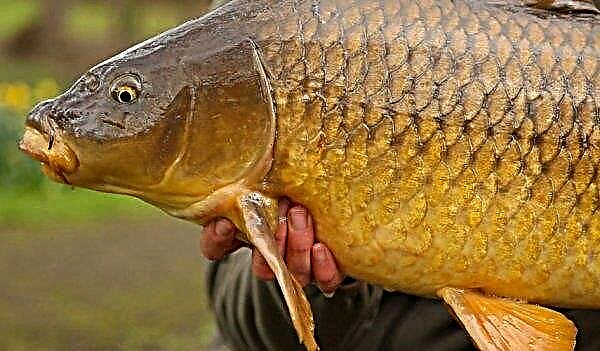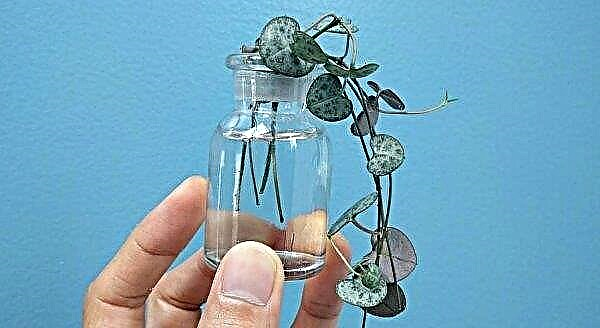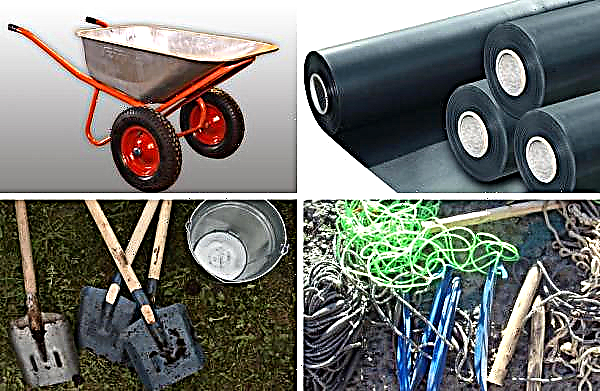This, without exaggeration, can be called a decoration plant: thanks to its evergreen color, culture brightly decorates landscape design in the warm season and is a contrasting highlight of the winter landscape. But neither the tree itself, nor gardeners are safe from cases when the thuja begins to turn yellow. What are the causes of this problem, and what to do, read further in the article.
Conditions for thuja growth
The loss by the thuja crown of its deep green color may be caused by adverse cultivation features. So that the tree grows healthy and beautiful, you need to take care of such items of agricultural technology:
- The soil. In the area where the crop grows, the land should be well-drained and moderately moist. The optimal soil composition is soddy soil mixed with peat and sand in a ratio of 2: 1: 1.
- Lighting. Must be moderate. Too open areas in the burning sun the tree does not welcome. The best place is partial shade.
- Watering. Both excessive hydration and lack of moisture are among the reasons why the thuja may turn yellow.
- Fertilizers Planting is not the only thing a gardener has to do for a thuja. She needs to be fed regularly.

Causes of yellowing and how to fix
When your evergreen culture turned yellow, it does not mean that it should be treated immediately. Perhaps this is a seasonal process. Coniferous leaf fall is inherent in the tree: at the age of 3–6 years, the needles can begin to turn white, turn yellow, and become necrotic. In their place, new ones grow. This phenomenon is associated with the fact that thuy flakes lose chlorophyll grains. The time of such a peculiar leaf fall is autumn.
Yellowing needles can be a varietal characteristic. For example, the crown of some varieties of western thuja (Thuja occidentalis) for the winter becomes golden brown. Columna is distinguished by the fact that with the onset of cold and frost, its needles begin to rust or acquire brown-brown hues.Important! If the needles turned yellow only on the lower branches, and the plant itself was planted near roads, then the cause of the color change may be technical salt, which is processed by transport routes during ice.
But there are a number of other causes of yellowing, which are associated with improper care, attacks of diseases and pests.
Sunburn
This is one of the most common reasons why thuja needles begin to lighten and turn yellow in the spring. The fact is that spring sunlight too intensely heats the culture, the needles of which have not yet managed to get stronger after the winter cold. Tenderness and sensitivity are not only coniferous scales, but also young twigs.
A plant affected by sunburn can be saved and returned not only decorative qualities, but also a healthy look. To do this, you often need to water the culture. There is no need to transplant it, since the tree can quickly come to life, regenerate needles and find its natural color.Did you know? In Latin, the name Tui means “sacrifice”, “incense”.
 For prevention, experienced gardeners recommend that before the start of spring, cover the plant on the sunny side with a special material that transmits oxygen but protects from the sun, or with spruce branches.
For prevention, experienced gardeners recommend that before the start of spring, cover the plant on the sunny side with a special material that transmits oxygen but protects from the sun, or with spruce branches.
Trees that grow in a container cannot be taken out in the sun as soon as it gets warmer. Organize gradual sunbathing. Otherwise, burns can not be avoided.
Video: Protecting conifers from sunburn
Landing errors
Every gardener who decided to plant a thuja should be aware that this is a responsible matter that requires the strict observance of certain rules:
- Careful choice of location, taking into account the characteristics of lighting, moisture, type of soil. So, on sandy soils, water does not linger, and the thuja will dry out, clay soils are distinguished by the density of the structure and the lack of air required by the roots, which provokes not only yellowing, in this case the plant may even die. It is not recommended to grow conifers on peat or marshy lands, which are characterized by stagnation of water. This is fraught with decay and death of the rhizome, and with it the aboveground part. Crohn will quickly begin to turn yellow and fade.

- Correct deepening of the root neck: it should be 1-2 cm above the level of the upper soil layer.

- Keeping distance between plants. Seedlings should be planted so that in the future the branches of adult trees do not touch. The optimal distance is 1 m. It is recommended to leave 0.5 m between the seedlings designed to create a hedge.

- Before planting, seedlings should be soaked in water. When air bubbles cease to appear on the surface of the liquid, seedlings must be removed.
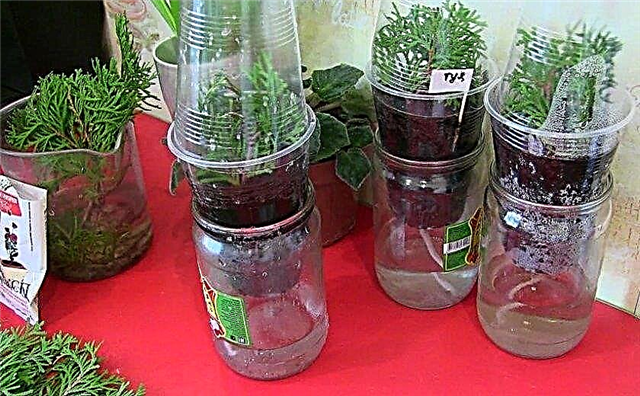
- Mandatory procedures that are carried out immediately after placing the culture in the hole and falling asleep in the planting hole are abundant watering (about 20 liters of water for one young tree) and mulching of the soil around the trunk (peat, sawdust, pine bark, wood chips are good as mulch, compost).

No sprinkling
Mandatory care for thuja is sprinkling the crown. The frequency of the procedure is the same as watering: the tree is irrigated with water using a special sprayer or simply sprayed.
Important! It is forbidden to carry out irrigation on a hot afternoon. The best time for sprinkling is morning or evening. In the sun, water droplets will look like small lenses that attract the burning rays of the sun, resulting in burns.
Fertilizer shortage
The reason that the needles of thuja becomes yellow or red in color may also be a lack of nutrients in the soil necessary for proper life. Eliminating this problem is quite simple: you need to timely feed.
To know what fertilizers to apply, follow the nature of the yellowing:
- chopping needles and acquiring a pale yellowish shade indicates a lack of nitrogen;
- with a lack of potassium, the crown may turn red;
- culture will inform about the need for copper and iron by drooping branches and a withered crown, which becomes brown in color;
- yellowish needles with intervein chlorosis indicate the need for manganese fertilizers.
Important! You can’t feed coniferous crops in the fall, since such an action will stimulate the growth and development of young shoots that do not have time to gain strength by the onset of cold weather: they will freeze, begin to dry out and die.
The tree is fed with organic and mineral substances in early spring and early summer. The best organic fertilizer is manure, which is dissolved in water (1: 4 ratio) and left to infuse for 14 days. After this, you can fertilize: on one tree you need 2-3 liters of dung infusion, which is poured under the soil around the trunk.
Two weeks after the introduction of organics, mineral fertilizing is carried out. It is best to use complex fertilizers purchased in specialized agricultural stores. For thuja, solutions of the preparations "Biod", "Kemira", "Epin" are recommended.
Diseases and their treatment
Despite good immunity, with improper care and violation of the planting procedure, a culture can get some ailments:
- Phytophthora - A fungal disease that destroys the rhizome of a tree. The culture will inform you of the defeat with yellow and brown needles with a grayish tint, the lower part of the trunk soft to the touch. Spores of the fungus have the ability to penetrate into the cells of the tree. The treatment consists in the treatment with the “Fundazole” solution.
- Brown shute - the acquisition of the tips of the needles of a yellowish-brown hue, the shoots begin to grow brown and die. Antifungal drugs, for example, Fundazol, Zircon, are effective for combating the disease. All diseased shoots need to be cut, although at the initial stages of the development of the disease they can be reanimated and restored.
- Rust - accompanied by yellowing and darkening of the needles. The disease originates in the spring and develops throughout the summer, autumn and winter, until the death of the culture. That is why it is very important to start treatment on time. All affected parts of the tree must be cut and burned. Then spray the tree with a solution of Bordeaux fluid. Effectively process the culture "Hom", "Fundazolom", "Topsinom-M."

Pests and the fight against them
In addition to these factors, yellowing of the thuja crown can be caused by pest attacks, which include:
- Spider mite - a small pest with an oval body, covered with hairs, and 4 pairs of paws, painted in green-yellow, orange or brown tones. The signal about the appearance of the tick is a dense web, as well as yellowing, and then darkening and decay of the needles. An effective insect control agent is Neoron treatment.

- Gray leaflet - a caterpillar whose body is painted in dark color. Its danger is that it makes cocoons on the needles of thuja, which are wrapped in cobwebs, as a result of which the needles begin to turn yellow, and may even turn white and fall off. This leads to the death of the whole tree. Treatment with a solution of Fufanon, Decis Profi, Actellika will help get rid of the leaflet.

- Bark beetle - a beetle that settles in the bark of a tree makes holes there, lays larvae that feed on thuja juices. The danger of the bark beetle is that as a result of its actions, the tree quickly dies: just one month of its life on the tree is enough. Against the beetle effective treatment with solutions of "Clipper", "Zircon", "Reasila".
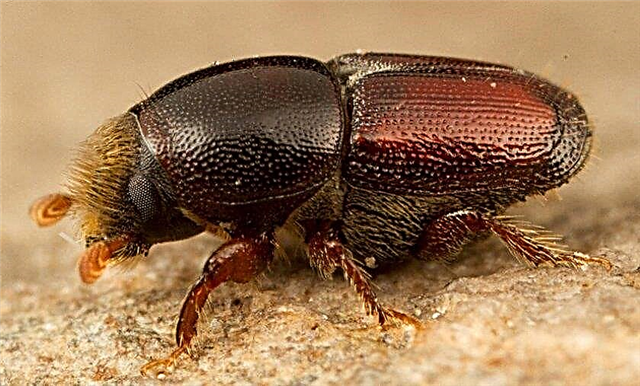
- Thuja aphid - This is a small insect that organizes entire colonies on a tree. It seems that the culture was sprinkled with white or silver substance. As a result of the life of such uninvited guests, the thuja begins to lose the natural color of the needles: it acquires a yellow color and falls off. Among the most effective insecticides against aphids is Fufanon. The optimal time for preventive spraying is the beginning of May.

Other reasons
If you are sure that you planted the thuja correctly, take care of it properly, it is not sick and does not suffer from pests, and the crown turns yellow anyway, then the reasons for this phenomenon may be the following:
- Excessive fertilization.
- Close proximity to the upper soil layer of the groundwater level.
- Painful reaction to temperature surges.
- Urine reaction in animals. For example, dogs like to “tag” under trees, which can cause yellowing and even blackening of needles.
- Incorrect pruning. The tree is well tolerated by this procedure, but if the branches are cut excessively, this can cause yellowing of the crown and even death of the tree.

In order for the thuja to decorate your landscape design with its decorative qualities, it must be properly looked after. This applies not only to young, but also adult trees. Despite its resistance and unpretentiousness to growing conditions, this coniferous plant, like any other crop, has its own requirements. The gardener's task is to comply with them.










